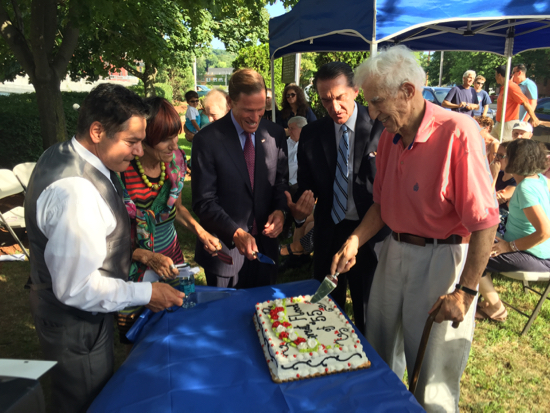Only in the Valley.
Not many communities would call a ceremony marking a horrible natural disaster’s anniversary a “celebration,” Greg Stamos noted Wednesday.
But not many communities have been affected as much as the Valley was by the Flood of 1955.
“We’re here today to remember the devastation and all those that were affected,” Stamos said while standing on the spot where, six decades earlier, the furious waters of the Naugatuck River had washed away a grocery store owned by his grandparents, John and Paraskeve Vartelas.
“But in a sense we’re here to celebrate how this defined the Valley as a transformative moment,” he said.
About 75 officials and residents gathered for the event Wednesday. The site is now Vartelas Park, at the intersection of Maple Street and Olson Drive.
Click the video above to see highlights from Wednesday’s event.
The river itself, then a cesspool contaminated by industrial waste, has since rebounded into a thriving watercourse.
And more personally, Stamos said, the flood defined the Valley as a place where neighbors help neighbors.
Like an Ansonia man who carried people back and forth across Ansonia’s Maple Street bridge in his stationwagon until the bridge gave way — taking the car, but fortunately no people, with it.
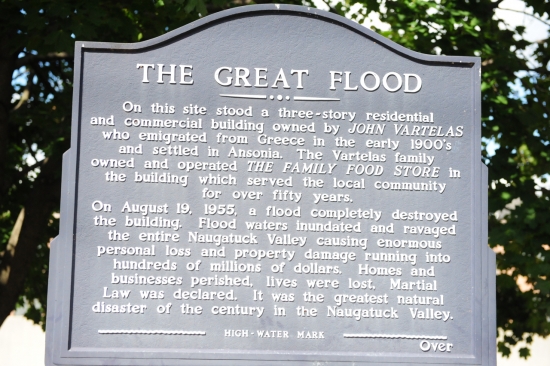
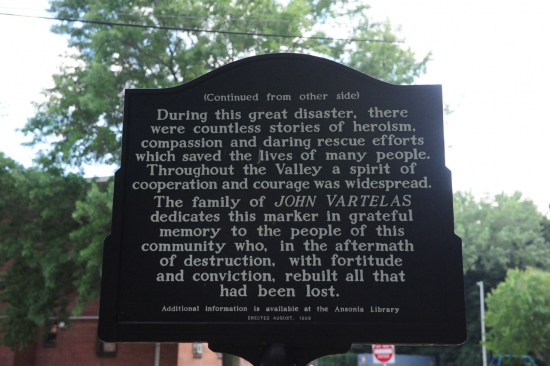
Or the Trabka brothers of Derby, who helped rescue lower Caroline Street residents during the flood’s aftermath — and were awarded $150 from the city for damage to their boat, according to the Derby Historical Society.
Or Valley icon Ed Cotter, a co-founder of the Derby’s Storm Ambulance and Rescue corps, as well as a photographer for the New Haven Register and Ansonia’s Evening Sentinel, who was simply “everywhere.”
Stamos recounted how his grandparents had started their grocery store in 1905, and how his grandmother, Paraskeve Vartelas, had first heard about the catastrophe while in her home on upper Franklin Street.
Paraskeve, whose husband John had died about five months earlier, ventured from the house.
“She looked down Maple Street and saw that the Vartelas block, which had been the family sustenance for half a century, had been ravaged and was gone,” Stamos, whose Main Street law practice stands a half-mile away, said. “She simply shook her head, blessed herself, and turned and walked home. That widow and her family moved forward, just like the Valley.”
It was a recurring theme of Wednesday’s ceremony.
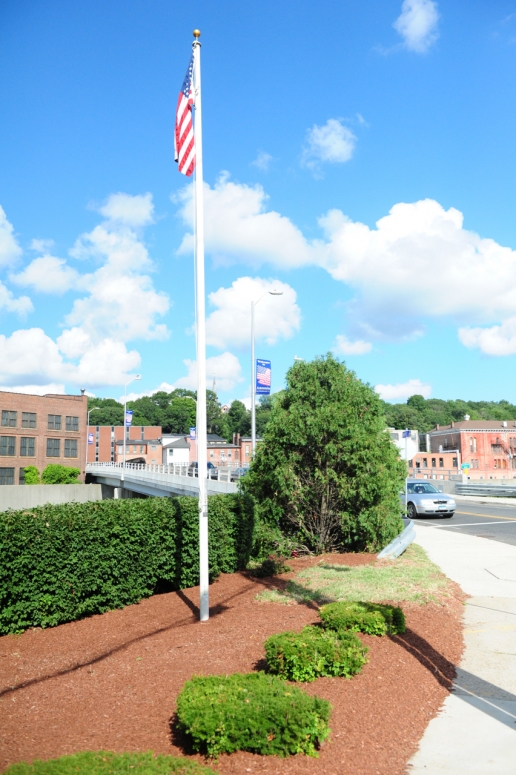
Ansonia Mayor David Cassetti recounted how his own father, a police officer, had to remove bodies from the river that the flood’s waters had turned up from cemeteries.
Statewide 91 people were killed in the flood, and there were four deaths in the Valley.
Then-Gov. Abraham Ribicoff called it the worst natural disaster in the history of the state.
The flood put 86,000 people of of work in Connecticut, and made 1,100 families homeless.
Cassetti said Wednesday that Valley residents responded to the disaster with “strength, courage, determination, and ingenuity,” traits they still possess today.
Derby Historical Society President Timothy Dillon read headlines from the Evening Sentinel — printed by the New Haven Register, since the presses in Ansonia were underwater — from the days after the flood.
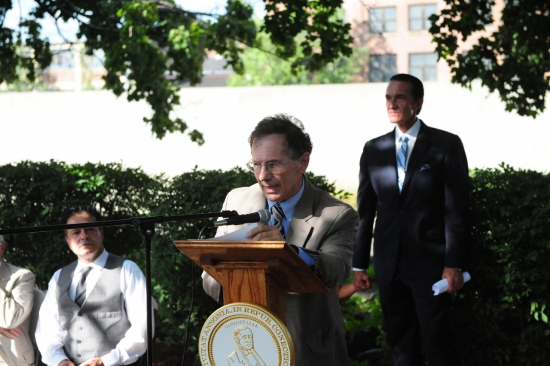
Retail losses in Ansonia alone — in 1955 dollars — were nearly $3 million, the newspaper estimated. Industrial losses? More than $25 million.
Sen. Richard Blumenthal recalled working for Ribicoff, and asking Ribicoff about his toughest days in public life.
“Without hesitation, he said ‘The days of the flood,’” Blumenthal recalled.
“What struck him was in fact the courage and daring of the people of the Valley as they went into the water, defying the ferocity and fierceness of nature,” he said.
Rep. Rosa DeLauro, 12 years old at the time of the flood, remembered her parents trying to check on Valley relatives in the days after the flood.
“Because this is a community that is so interconnected, and that people have ties and relationships … everyone was worried and concerned about what was happening to their loved ones and to everyone else,” DeLauro said.
At the end of Wednesday’s ceremony, Ted Vartelas, Stamos’ uncle, helped the dignitaries gathered to cut a cake celebrating the resilience, tenacity, camaraderie, and teamwork of Valley residents that bleak August Friday in 1955.
“And for years thereafter,” Stamos said.
